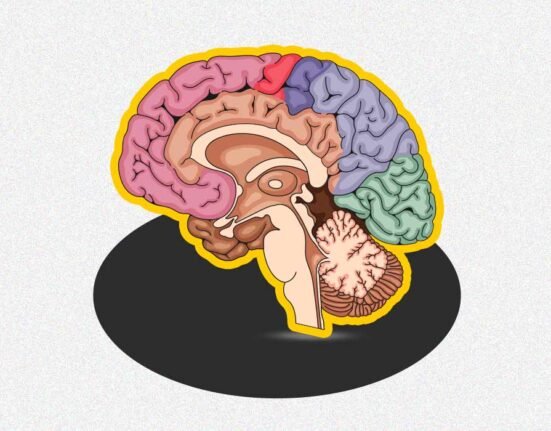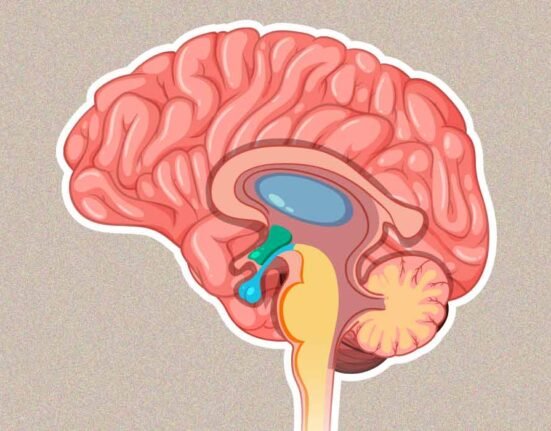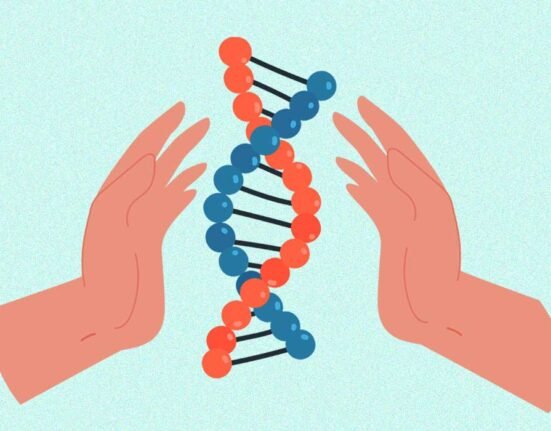Imagine sitting in the office of a therapist, feeling vulnerable and open, ready to receive help and healing, to receive a diagnosis that doesn’t quite capture your experience. That discrepancy is sometimes more than a matter of misunderstanding; it might be a function of the way our minds, even those of trained therapists, are structured to understand.
Cognitive biases—systematic, unconscious errors of perception—can modestly influence clinical judgment. Although these biases assist us in coping with the sheer amount of information we are constantly exposed to, in mental health, they can lead well-intentioned professionals astray with disastrous effects for patients.
Cognitive biases can distort symptom impressions, interpretations, and diagnoses in mental health diagnosis, where subjective judgment usually plays the central role. Cognitive biases can lead to misdiagnoses, treatment mistakes, and lost opportunities for remission. In order to provide ethical, patient-based care, it is important to know and compensate for these cognitive blind spots (Kozlowski et al., 2017).
Read More: The Role of Introspection in Overcoming Cognitive Biases
Knowing Cognitive Biases and Diagnostic Impact
1. What are Cognitive Biases?
Cognitive biases are psychological shortcuts (heuristics) that facilitate decision-making but typically lead to inaccuracies in rationality or objective truth (Kahneman, 2011). In mental health, where information is potentially incomplete or subjective, such biases can distort the diagnostic process and negatively affect outcomes.
2. Why Biases Matter in Mental Health Diagnosis
As compared to regions where concrete biomarkers exist, psychological health relies on clinical judgment, interviewing, and behaviour rating. This subjectivity makes the field highly susceptible to cognitive distortions (Garb, 2005). The clinician would unknowingly misdiagnose depression as borderline personality disorder or schizophrenia as bipolar disorder due to prevailing bias.
Read More: Cognitive Biases in Everyday Life
Familiar Cognitive Biases in Mental Health Diagnosis
1. Confirmation Bias
Clinicians might gather data that confirms their initial diagnosis and disregard disconfirmatory evidence (Mendel et al., 2011). Suppose a patient reports sleeping problems and depression. A clinician already having a suspicion of depression might ignore indications of bipolar disorder, like times of heightened energy or impulsiveness.
2. Anchoring Bias
This is because too much emphasis can be put on the very first bit of information obtained (Kvarven et al., 2020). The very first report from a referral source can skew the whole assessment process, even if subsequent data disproves it.
3. Availability Heuristic
Clinicians are likely to overestimate the likelihood of a diagnosis depending on how readily comparable cases come to mind (Tversky & Kahneman, 1973). If they have just seen a case of PTSD, they are likely to overdiagnose it in another patient with anxiety.
4. Halo Effect
A favourable impression of a patient’s behaviour or appearance can overpower underlying symptoms (Nisbett & DeCamp Wilson, 1977). A respectful, well-dressed patient may be seen as less troubled than they are, and thus be underdiagnosed or dismissed.
5. Hindsight Bias
Once a diagnosis is made, clinicians may be able to persuade themselves that they “knew it all along,” resulting in overconfidence and reduced susceptibility to feedback in subsequent examinations (Roese & Vohs, 2012).
6. Attributional Bias
This entails attributing the source of behaviours incorrectly, frequently scapegoating patients instead of circumstances. A clinician could term a patient non-compliant when the actual cause of the behaviour is a lack of access to resources or misinterpreted symptoms (Haslam & Kvaale, 2015).
7. Backfire Effect
Clinicians might hold onto their initial perception more firmly when faced with contradicting evidence, rather than revising it (Nyhan & Reifler, 2010). This hinders corrective insight and postpones proper treatment.
8. False Consensus Effect
Clinicians can overestimate the similarity of patients’ values or experiences to their own, resulting in faulty judgments (Marks & Miller, 1987). This bias may particularly influence cultural competence with diverse groups.
9. Disconfirmatory Evidence Bias
This results in clinicians rejecting or downplaying evidence that is inconsistent with their working diagnosis (Nickerson, 1998), typically promoting incorrect assumptions.
10. Diagnostic Overshadowing
Where an initial diagnosis overshadows other comorbid disorders (Jones et al., 2008), e.g., explaining all distress in an autistic patient with autism and ignoring depression or anxiety.
Read More: The Approach Of Cognitive Psychology And Its Role In Mental Health
Consequences of Diagnostic Biases
1. Misdiagnosis and Inappropriate Treatment
Cognitive distortions can cause improper diagnoses and inadequate treatment decisions, including the administration of antidepressants to a bipolar patient, which could exacerbate manic symptoms (Zimmerman & Mattia, 2001).
2. Destruction of Trust
Diagnostic mistakes repeated over time can cause patients to feel stigmatised or not understood, lowering their motivation to undergo therapy or get future assistance (Corrigan, 2004).
3. Overmedicalization or Underdiagnosis
Certain biases can result in pathologising typical emotional reactions, whereas others minimise serious conditions, most notably within marginalised populations (Metzl & Hansen, 2014).
Read More: Let’s Talk About the Cognitive Psychology Of Learning And Education
Strategies to Reduce Cognitive Biases in Mental Health Diagnosis
The identification of cognitive biases is the initial step toward minimising diagnostic error in mental health treatment. Simply recognising, however, is insufficient. The following evidence-based strategies present practical methods to minimise the impact of cognitive distortion on mental health assessment and treatment planning.
1. Self-awareness and Metacognition
Clinicians need to have metacognitive habits—consciously thinking about their thought processes. Self-awareness enables clinicians to recognise when they are engaging in intuitive judgments or common pitfalls. Reflective habits like journaling, mindfulness, and undertaking regular supervision can help bring into awareness patterns of overconfidence, premature closure, or emotional reasoning (Schön, 1983; Croskerry et al., 2013). Such a reflective orientation is at the root of ethical practice and professional growth.
2. Structured Diagnostic Tools
Unstructured clinical interviews, by nature, are open-ended and subjective. With the integration of structured diagnostic tools such as the Structured Clinical Interview for DSM-5 (SCID) or the Patient Health Questionnaire-9 (PHQ-9), clinicians can become more systematic in their diagnostic approach.
Structured diagnostic tools guarantee that all relevant elements are assessed and factored in, curtailing personal inference or cognitive biases (First et al., 2015). Structured diagnostic tools introduce more consistency and objectivity into clinical assessments.
3. Multidisciplinary Approaches and Team Care
Mental health presentations tend to be complex and multifactorial. Team-based, collaborative approaches to diagnosis minimise individual bias through the inclusion of various perspectives. Psychiatrists, psychologists, nurses, and social workers contribute different skills that enhance diagnostic acuity. Consistent team meetings, case conferences, and multidisciplinary supervisions provide forums to test assumptions, promote accountability, and make more balanced decisions (Graber et al., 2012).
4. Involvement of the Patient
Patients are not passive recipients of diagnoses—they are active players in their care. Engagement of patients in dialogue about their symptoms, history, and worries increases diagnostic validity. Shared decision-making encourages trust, lowers clinician-centric assumption risk, and guarantees the patient’s viewpoint is incorporated into the diagnostic story (Charles et al., 1997). This partnership also enhances therapeutic alliance and treatment participation.
5. Evidence-Based Practices
Following proven clinical guidelines reduces bias by ensuring diagnostic decisions are empirically based. Guidelines created by powerful organisations, including the American Psychiatric Association (APA), draw on the most current data from large-scale studies and meta-analyses (APA, 2022). Adhering to such protocols lessens the danger of making decisions based on personal heuristics or anecdotal knowledge.
6. Systematic Information Gathering
In busy clinical settings, time constraints tend to result in shortcuts and less-than-thorough examinations. Utilising systematic information collection techniques—e.g., checklists, differential diagnosis matrices, and standardised interviews—guarantees that all pertinent data is gathered before reaching a decision.
This procedure aids in overcoming biases such as anchoring (placing too much stress on first impressions) and confirmation bias (selectively searching for information that confirms preconceptions) (Kostopoulou et al., 2008).
7. Seeking Mentorship and Supervision
Regular supervision is essential in enhancing diagnostic judgment among trainees and early career professionals. Supervisors are able to recognise frequent biases, offer constructive criticism of challenging cases, and present alternative perspectives. For instance, a mentor might see a clinician consistently underdiagnosing anxiety disorder among men and assist in addressing possible gender bias (Falender & Shafranske, 2004). Supervision leads to reflective learning and minimises diagnostic error.
8. Cultural Competency Training
Cultural context heavily affects the expression and interpretation of mental health symptoms. If clinicians are not appropriately trained, they are susceptible to cultural biases like the false consensus effect or misattribution of symptoms. Cultural competency training allows clinicians to make diagnoses with cultural humility, identify culturally specific presentations, and not stereotype (Sue et al., 2009). This is critical for accurate, fair treatment of diverse populations.
9. Continuous Professional Development
Mental health practice changes with emerging research, and so do cognitive biases. Continued education—through CE courses, workshops, seminars, and scholarly journals—keeps clinicians up to date on new diagnostic instruments, clinical models, and decision-making research (Elstein & Schwarz, 2002). A commitment to ongoing learning refines diagnostic abilities, thwarts complacency, and keeps clinicians cognizant of changing cognitive pitfalls.
Read More: How Psychologists Turn Therapy Resistance into Progress
Conclusion
Cognitive biases, as natural to human cognition as they are, may greatly skew mental health diagnoses, delaying treatment, leading astray clinical decision-making, and undermining the therapeutic alliance. The cost is too great to ignore their influence. By identifying and correcting these mistakes, clinicians enhance diagnostic acumen and promote more balanced care.
Organised tools, patient-focused strategies, reflective practice and consultation are important protections. In an age when psychological distress is frequently subtle and complicated, direct and modest thinking continues to be among the most effective tools of therapy.
FAQs
1. What are cognitive biases, and why do they matter in mental health diagnosis?
Cognitive biases are unconscious mental shortcuts that help with decision-making but can lead to errors in judgment. In mental health, they can distort clinical assessments, resulting in misdiagnoses and inappropriate treatment.
2. How do common biases like confirmation or anchoring affect clinical judgment?
Confirmation bias leads clinicians to favour information that supports their initial diagnosis, while anchoring bias causes overreliance on first impressions. Both can result in incomplete or inaccurate evaluations of patients.
3. What are the consequences of diagnostic biases in therapy?
Diagnostic biases can lead to misdiagnoses, ineffective or harmful treatments, patient mistrust, and under- or overdiagnosis, particularly among marginalised or culturally diverse groups.
4. Can structured diagnostic tools help reduce bias?
Yes, tools like the SCID or PHQ-9 standardise assessments, reduce subjectivity, and ensure that critical diagnostic criteria are thoroughly evaluated, minimising personal bias in clinical decision-making.
5. How does involving the patient in the diagnostic process improve accuracy?
When patients actively participate, they provide insights and feedback that may challenge clinicians’ assumptions. This collaboration improves diagnostic accuracy, strengthens trust, and enhances treatment engagement.
6. What steps can clinicians take to manage their own cognitive biases?
Clinicians can use strategies such as reflective practice, regular supervision, cultural competency training, multidisciplinary teamwork, and staying current with evidence-based guidelines to reduce the impact of cognitive distortions.
References +
APA. (2022). Clinical Practice Guidelines. American Psychological Association.
Charles, C., Gafni, A., & Whelan, T. (1997). Shared decision-making in the medical encounter. Social Science & Medicine, 44(5), 681–692.
Corrigan, P. W. (2004). How stigma interferes with mental health care. American Psychologist, 59(7), 614–625.
Croskerry, P., Singhal, G., & Mamede, S. (2013). Cognitive debiasing 1: Origins of bias and theory of debiasing. BMJ Quality & Safety, 22(2), 58–64.
Elstein, A. S., & Schwarz, A. (2002). Clinical problem solving and diagnostic decision making. BMJ, 324(7339), 729–732.
Falender, C. A., & Shafranske, E. P. (2004). Clinical Supervision: A Competency-Based Approach. American Psychological Association.
First, M. B., Williams, J. B. W., Karg, R. S., & Spitzer, R. L. (2015). Structured Clinical Interview for DSM-5—Research Version (SCID-5 for DSM-5, Research Version).
Garb, H. N. (2005). Clinical judgment and decision making. Annual Review of Clinical Psychology, 1, 67–89.
Graber, M. L., et al. (2012). Bringing diagnosis into the quality and safety equations. JAMA, 308(12), 1211–1212.
Haslam, N., & Kvaale, E. P. (2015). Biogenetic explanations of mental disorder. Current Directions in Psychological Science, 24(5), 398–403.
Jones, S., et al. (2008). Diagnostic overshadowing: An important issue for mental health services. Advances in Psychiatric Treatment, 14(6), 442–449.
Kahneman, D. (2011). Thinking, Fast and Slow. Farrar, Straus and Giroux.
Kostopoulou, O., et al. (2008). Diagnostic accuracy: effects of decision support systems. Medical Decision Making, 28(4), 527–534.
Kvarven, A., et al. (2020). The anchoring effect: Meta-analysis of 30 years of research. Journal of Experimental Psychology: General, 149(2), 185–203.
Marks, G., & Miller, N. (1987). Ten years of research on the false-consensus effect. Psychological Bulletin, 102(1), 72–90.
Mendel, R., et al. (2011). Confirmation bias: Why psychiatrists stick to wrong preliminary diagnoses. Psychological Medicine, 41(12), 2651–2659.
Metzl, J. M., & Hansen, H. (2014). Structural competency. Social Science & Medicine, 103, 126–133.
Nickerson, R. S. (1998). Confirmation bias: A ubiquitous phenomenon. Review of General Psychology, 2(2), 175–220.
Nisbett, R. E., & DeCamp Wilson, T. D. (1977). The halo effect. Journal of Personality and Social Psychology, 35(4), 250–256.
Nyhan, B., & Reifler, J. (2010). When corrections fail: The persistence of political misperceptions. Political Behaviour, 32(2), 303–330.
Roese, N. J., & Vohs, K. D. (2012). Hindsight bias. Perspectives on Psychological Science, 7(5), 411–426.
Sue, S., Cheng, J. K. Y., Saad, C. S., & Chu, J. P. (2012). Asian American mental health. Annual Review of Clinical Psychology, 8, 113–135.
Tversky, A., & Kahneman, D. (1973). Availability: A heuristic for judging frequency and probability. Cognitive Psychology, 5(2), 207–232.
Zimmerman, M., & Mattia, J. I. (2001). The psychiatric diagnostic screening questionnaire. Psychiatric Services, 52(1), 55–62.













Leave feedback about this